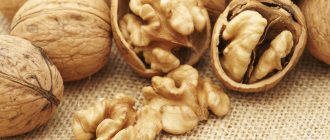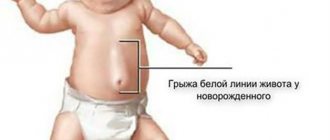Functional colic in babies is a fairly common problem. To ease the child's suffering, loving parents are ready to do anything. However, there are not so many ways to relieve pain. One of them is anti-colic tea for newborns.
This method has been tested by time and the experience of many generations. If several decades ago herbal infusions were prepared by hand, now modern manufacturers offer all kinds of balanced and ready-to-use products for infants. In order not to harm the baby, you should know which tea to choose in a particular case and how to use it.
Why does colic occur?
Colic in newborns is pain in the intestines that occurs from excess gas formation. Children suffer from a similar problem in the first 2-3 months of life. The symptoms of this process are simple: some time after feeding, the child begins to worry, draw in his legs, groan, and sometimes scream forcefully.
- The fact is that three weeks after birth, the newborn’s gastrointestinal tract is actively developing. This process is quite lengthy and painful for the baby. Changes in intestinal microflora are accompanied by gas separation, which inevitably leads to bloating.
- Gas formation in the baby's intestines also depends on the mother's nutrition. In addition, at the initial stage of development, the baby receives small portions of mother's milk, since the mother's body also adapts to the child's feeding regimen. Further, the volume of milk secreted increases, and the newborn absorbs more nutrition. At the same time, his stomach and intestines straighten out and gain strength.
- When sucking milk, the baby swallows air, which can also cause intestinal colic. Transferring a child from breastfeeding to artificial feeding is also one of the causes of colic, since the microflora of the gastrointestinal tract changes.
Infantile colic - treat or wait?
Most often, in the structure of the pathology of the digestive organs in children of different age groups, functional disorders of the gastrointestinal tract (FGID) occur. By FGIT we mean the presence of clinical symptoms in the absence of organic changes (structural abnormalities, inflammatory changes, tumors, infections) in the gastrointestinal tract. According to various authors, FGICTs occur in 65–75% of children, depending on age [1–4], and the clinical picture is dominated by abdominal pain. In young children, a diagnosis of functional abdominal pain is not made, and a condition with similar symptoms is called infant colic (from the Greek "kolikos", meaning "pain in the colon"). In the first three months of life, more than 70% of children experience functional intestinal colic. According to the Rome III criteria (2006), infant colic is defined as “episodes of increased irritability, fussiness, or crying, occurring and ending without obvious causes, lasting 3 hours a day or more on at least 3 days a week, for at least one day. weeks."
Colic in young children is a polyetiological syndrome of functional origin that disrupts the general condition of the child, worsening the quality of life not only of the child, but also of his parents. It is this syndrome that is the most common reason for parents to visit a pediatrician in the first months of their children’s lives [2].
The causes of intestinal colic in children of the first year of life have not been fully elucidated. Among the main reasons: morphofunctional immaturity of the peripheral innervation of the intestine, dysfunction of central regulation, late start of the enzymatic system of the gastrointestinal tract, increased gas formation, lactase deficiency, lack of hydrochloric acid, disturbances in the formation of intestinal microbiocenosis, the nature of the mother's diet. Allergic and pseudo-allergic reactions, the transition from natural feeding to artificial feeding, and the inclusion of food additives in the diet cannot be excluded as causes. In addition, violation of feeding technique (rapid sucking, improper latching of the nipple, swallowing air, overfeeding, overheating) can also cause the development of colic. Rare causes are congenital malformations (cleft lip, cleft palate, tracheoesophageal fistula).
The mechanism of development of colic is associated primarily with impaired intestinal motor function and increased gas formation. In this case, the peristaltic wave does not cover the entire intestinal tube, but only some of its sections, which leads to a sharp intestinal spasm in certain parts of the small intestine and, accordingly, pain in the form of colic. The immaturity of the enzyme system and the development of microbiocenosis with the predominance of opportunistic microorganisms determine the incomplete breakdown of fats and carbohydrates, which leads to more pronounced gas formation. The latter contributes to swelling of the small intestine and the occurrence of colic. Thus, increased gas formation, impaired intestinal motility, and local spasms play a leading role in the development of colic syndrome. In premature babies, compared to full-term babies, intestinal colic is usually more pronounced and more protracted.
It is important to know that infant colic usually begins at 2-3 weeks of life and ends at 3-4-6 months. To diagnose intestinal colic in infants, the so-called “rule of three” is used - crying for three or more hours a day, at least three days a week, for three weeks in a row. The clinical picture is dominated by loss of appetite, abdominal pain, flatulence, tearfulness, crying, excitability, sleep disturbance, and disturbance in stool character. The attack, as a rule, begins unexpectedly, against the background of complete well-being, more often during or shortly after feeding, and is accompanied by prolonged crying. The child screams shrilly, worries, kicks his legs, his feet are often cold to the touch, his arms are pressed to his body. The abdomen is swollen and tense, and infrequent regurgitation is possible. However, after the end of an attack of colic, children never experience pain on palpation of the abdomen, there is always an improvement in the condition after the passage of gas, defecation, outside the attack, children eat well, gain weight, and there is a general positive emotional mood.
It must be remembered that the diagnosis of intestinal colic is established only after more serious conditions accompanied by the occurrence of abdominal pain have been excluded. In addition to studying clinical symptoms, it is important to study scatology and evaluate the level of calprotectin, which may indicate inflammation in the child’s intestines.
When it comes to functional disorders, then, as a rule, medical tactics come down to observation. The question naturally arises: is it necessary to treat infant colic? Certainly. need to. Colic in a child is an emotional stress for the whole family, especially for the mother. The baby's anxiety and screaming have a negative psychological effect on the mother and other family members, which leads to irritability, nervousness, and weakness, which can result in the development of hypogalactia in the mother and disruption of the psychological climate in the family.
The following negative consequences may be observed on the part of the baby: disruption of parietal digestion and absorption of nutrients (viscous mucus bubbles), development of regurgitation and vomiting syndrome due to increased intra-abdominal pressure. All this can lead to the development of malnutrition and rickets, and subsequently cause the formation of gastroesophageal reflux, secondary enzymatic deficiency, and colitic syndrome.
How to treat colic in newborns? In some cases, it is easier to prevent colic by following the diet of a nursing mother: limiting the consumption of raw and pickled vegetables and fruits, especially grapes. Raw plant foods, sauerkraut and apples increase peristalsis and cause bloating. For this reason, it is better to bake, boil or stew fruits and vegetables. For the same purpose, it is recommended to exclude kvass and legumes from food; A nursing mother should consume dairy products every day. However, if the mother experiences bloating after drinking milk due to a deficiency of the enzyme that is necessary for the absorption of lactose in milk, then it should be abandoned. Black bread is a healthy product, but it also causes fermentation in the intestines. It is necessary to give up chocolate and limit sweets and soft baked goods. Correct the psycho-emotional state of the mother and surrounding relatives. It is necessary to adhere to the following recommendations for the treatment of colic in newborns: before each feeding, lay the baby on the tummy for 5-10 minutes, and then stroke it clockwise. This procedure improves intestinal motility and gas discharge. Prevention of aerophagia lies in experience and skill in feeding both by breast and bottle. It is necessary that when feeding the child grasps not only the nipple, but also the isola, and does not take breaks. Also, for the same purpose, after feeding, you should hold the baby upright for 10–15 minutes to remove the air that entered the baby’s stomach during feeding. If the child is bottle-fed, it is necessary to choose the right formula (for example, NAN Comfort, Nutrilon Comfort, etc.).
In order to remove gases from the child’s body, parents often resort to gas tubes or enemas, which can be unsafe, especially in premature babies with easily vulnerable intestinal mucosa.
The most “ancient” means of combating colic are fennel or dill. Especially for children, it is sold in the form of granulated tea or dill water. The Plantex drug and BabyCalm, Happy-Baby products also contain fennel essential oil, which has weak carminative and antispasmodic effects and eases an attack of colic in a child. However, we must remember that Plantex sachets contain lactose, so they cannot be used by children with lactase deficiency. In addition to dill oil, BabyCalm and Happy-Baby also contain anise and mint oils, which can cause allergic reactions. In addition, oil drops are poorly absorbed by the child’s immature gastrointestinal tract.
Among the drugs used for intestinal colic are herbal remedies containing liquid tinctures of medicinal herbs fennel, chamomile flowers, coriander, for example Bebinos, as active ingredients. When using such drugs, it should be remembered that they contain ethanol, which makes their long-term use in infants impossible.
The safest and most effective way to treat colic is to use antifoam agents. These include drugs based on simethicone (Espumizan L, Espumisan 40, Sab simplex, Bobotik). Simethicone is a mixture of dimethylsiloxane polymer with silicon dioxide (SiO2). The mechanism of action is based on weakening the surface tension of gas bubbles in the digestive tract, leading to their rupture and subsequent removal from the body. Simethicone destroys gas bubbles surrounded by mucus, and the released gas is freely absorbed or evacuated from the body naturally [6–12]. The drug is inert, is not absorbed from the gastrointestinal tract and does not affect gastric secretions or nutrient absorption. After oral administration, the drug is excreted unchanged in the feces [6, 7, 12–14]. The risk for infants whose mothers use the drug is negligible [15]. With regard to the pharmacological treatment of infant colic, which should only be started after non-pharmacological measures have failed, simethicone is considered one of the most commonly and effectively used carminatives [9, 16–18]. There is no habituation to it. Simethicone preparations are used both during the occurrence of pain, and, as a rule, the pain syndrome is relieved within a few minutes, and to prevent the development of colic with each feeding of the baby.
Bobotik is an emulsion of simethicone, approved for use in children from 28 days of age, contains raspberry flavor and citric acid, dosage 8 drops (20 mg of simethicone). Sab Simplex is approved for use in children from birth; in addition to simethicone, the suspension contains citric acid, vanilla and raspberry flavoring, dosage of 15 drops (approximately 40 mg of simethicone). Both drugs do not contain milk sugar. The suspension is less stable and viscous than an emulsion and requires careful shaking before dropping. Should be used with caution in children prone to allergic reactions.
Espumisan L and Espumisan 40 are emulsions approved for use in children from birth, do not contain lactose, and contain simethicone and banana flavor. The drugs are very convenient to use. Espumisan 40 has a measuring spoon, which ensures quick and accurate dosing (one measuring spoon contains 40 mg of simethicone), and Espumisan L uses a special measuring cap for this, which makes it possible not to count the number of drops (1 ml contains 40 mg of simethicone). It can be given to the baby from a spoon, added to formula, milk, or water before or after feeding. If necessary, Espumisan can be used for a long time.
Consistent implementation of all the described measures leads to relief of the child’s condition. If treatment for infant colic is ineffective, it is necessary to examine the baby to identify congenital or organic pathology, followed by appropriate treatment.
Literature
- Belmer S.V., Gasilina T.V., Khavkin A.I., Eiberman A.S. Functional disorders of the digestive organs in children. Recommendations and comments. M., 2005.
- Zakharova I.N., Sugyan N.G., Andrukhina E.N., Dmitrieva Yu.A. Pediatrician tactics for infantile intestinal colic // RMJ. Mother and child. Pediatrics. 2010, No. 1.
- Khavkin A.I. Functional disorders of the gastrointestinal tract in young children. A manual for doctors. M., 2001. pp. 16–17.
- Khavkin A.I., Berdnikova E.K., Zhikhareva N.S. Modern ideas about infant colic. Diseases of the digestive system. 2006. T. 8.
- Khavkin A.I. Intestinal colic in young children // District pediatrician. 2012, No. 1.
- AHFS. Drug Information - Simethicone. Bethesda: American Society of Health-System Pharmacists. Electronic version. 2007.
- BfArM. Mustertexte zu Simeticon Kapseln und Kautabletten/Granulat 40/80/100/120/160 mg. Fachinformation Nr. fi3800 bx.rtf; Gebrauchsinformation Nr. gi3800 d1.rtf. Stand: 12/21/2000.
- Blaschek W., Ebel S., Hackenthal E., Holzgrabe U., Keller K., Reichling J., Schulz V. Hrsg. Hagers Handbuch der Drogen und Arzneistoffe - Simethicon. HagerROM. 2006. Berlin: Springer-Verlag; 2006.
- Althaus P., Mesnil M. Piptal® gouttes: produit de remplacement // Schweiz Apoth Z. 1991; 129(2):43–44.
- BfArM. Mustertexte zu Simeticon Kapseln und Kautabletten/Granulat 40/80/100/120/160 mg. Fachinformation Nr. fi3800 bx.rtf; Gebrauchsinformation Nr. gi3800 d1.rtf. Stand: 12/21/2000.
- Blaschek W., Ebel S., Hackenthal E., Holzgrabe U., Keller K., Reichling J., Schulz V. Hrsg. Hagers Handbuch der Drogen und Arzneistoffe - Simethicon. HagerROM. 2006. Berlin: Springer-Verlag; 2006.
- Martindale — The complete drug reference. Simeticone. London: Pharmaceutical Press, Electronic version. 2008.
- Dollery C. ed. Therapeutic Drugs. Simethicone. 2nd ed. Edinburgh: Churchill Livingstone. 1999, p. S35–7.
- PDR - Physicians' Desk Reference. Maximum Strength Gas Aid Softgels. 59 th ed. Montvale: Thomson PDR. 2005, p. 1932.
- Briggs GG, Freeman RK, Yaffe SJ Durgs in pregnancy and lactation - Simethicone. A reference guide to fetal and neonatal risk. 7 th ed. Philadelphia: Lippincott Williams & Wilkins; 2005, p. xxi-xxvi, 1469.
- Edwards C., Stillman P. Childhood ailments // Pharm J. 1994; 252 (6779): 324–327.
- Savino F., Oggero R. Trattamento delle coliche gassose del lattante // Min Pediatr. 1996; 48 (7–8): 313–319.
- Treem WR Infant colic: A pediatric gastroenterologist's perspective / Pediatr Clin North Am. 1994; 41(5):1121–1138.
I. N. Kholodova, Doctor of Medical Sciences, Professor
GBOU VPO RNIMU im. N. I. Pirogova Ministry of Health of the Russian Federation, Moscow
Contact Information
Abstract. The article discusses the etiology, mechanism of development of infant colic. Emphasizes the role of early diagnosis, the need for differential diagnosis. Particular attention is paid to the treatment of infant colic, and the author, justifying its necessity, lists the consequences of untreated colic in children. An important factor in the correction of this condition is to respect maternal dietetics, normalization of psychological climate in the family, feeding mode and feeding equipment. This article describes the basic medication evaluation of their application.
What remedies help relieve a baby from colic?
- You should watch the baby. Having found out when the first symptoms of intestinal problems appear, at what time of day and at what interval after feeding, it will not be difficult for you to describe the situation to a specialist.
- After feeding, it is recommended to hold the baby upright to allow excess air to escape.
- Massaging your baby's tummy against colic promotes rapid digestion and strengthens the intestines.
- Tea for newborns for colic relieves spasms and promotes better absorption of food.
A tummy ache is also colic
Behind true colic is a disruption of the intestines and inflammation. It, in turn, can be caused by pinching of the vagus nerve. The correctness of this statement is confirmed by the fact that after the mobility of the skull bones is restored and the nerve is released, the child’s condition improves, and colic ceases to bother him.
How to identify true colic? Distinctive features:
- Directly related to food intake
- There is bloating in the tummy
- Can appear at any time of the day
- The child pulls his legs towards his tummy
- Retention of stool or loose stool
In this case, the child may be diagnosed with lactase deficiency or dysbacteriosis. More often than not, all of these diagnoses are “masks” that hide intestinal dysfunction caused by pinched vagus nerve.
What is herbal tea for babies?
- As a rule, chamomile is the basis for preparing a herbal drink for newborns. This plant has many valuable properties. It is a sedative and at the same time strengthens the immune system and improves digestion.
- Dill seeds can be brewed and given to a baby at the age of 1 month. The famous “dill water” promotes gas separation, relieves cramps and bloating.
- Fennel can relieve pain in your baby, improve digestion, and cure your baby from colic. A mixture of dill and fennel is a good base for brewing a weak decoction, which is quite suitable for an infant.
If you are often in nature, in the forest or outside the city, you can prepare herbs yourself and not use pharmaceutical preparations. Chamomile and dill seed are affordable plants that can be easily harvested and dried in the sun on warm summer days.
To properly brew tea for babies against colic, you should pour the required amount of herb with boiling water and immediately drain it. Repeated brewing will be clean and will allow the plant to release all the substances necessary for the child’s health.
How to brew tea correctly
- Chamomile tea. Take a glass of boiling water for one teaspoon of chamomile flowers. The grass is poured and infused for an hour. After this, the tea should be strained. You can give your child a drink starting with half a teaspoon.
- Dill water. Brew a teaspoon of dill seeds with a glass of boiling water. The anti-colic drink is infused under the lid for an hour. Dill water should be given to the baby one teaspoon before each feeding.
- Fennel tea. Fennel seed is brewed in the same way as dill seed. To enhance the effect, you can mix them together and pour boiling water over them. After infusing the solution under the lid for an hour, the resulting decoction should be strained.
Any of the decoctions to combat colic should be given to a baby no earlier than he is one month old.
Benefits of tea for babies
- In addition to breast milk, the baby needs simple clean water. Tea will partially replace water and allow the baby to replenish the lack of moisture and quench his thirst. If the baby is bottle-fed, then even more fluid is required.
- 100 ml liquid bottle. - this is the norm consumed by the baby per day. Sometimes a newborn is capricious because he wants to drink rather than eat. In this case, the decoction is an excellent alternative to formula and breast milk.
- Tea for babies helps prevent colic, constipation and other problems with the digestive system.
- A chamomile or dill drink helps improve intestinal function, prevent bloating, and reduce gas formation.
Colic in a newborn
The first year of a baby’s life is very eventful - he grows and every day pleases his parents with new successes. But active growth and development are also associated with digestive disorders, which are especially common in children of this age. The most common digestive disorders in babies are infant colic, constipation and regurgitation. Up to 70% of children have such disorders, and this is the cause of endless worries and sleepless nights for their parents. Situations are not so rare when the same child suffers from several disorders at once - colic and constipation, regurgitation and colic, etc. Every pediatrician will tell parents that most of these disorders are temporary and do not interfere with the child’s growth and development. But nevertheless, mothers can help their baby by reducing the level of discomfort.
How common is infant colic?
Colic occurs in 40% of children in the first year of life. Colic sometimes appears from the first week, usually culminates at 4-6 weeks and usually disappears by 4-5 months of life.
Colic in a newborn - symptoms.
Colic is a behavioral disorder in a child due to sudden abdominal pain. Even during feeding, such a child experiences sharp painful crying, redness of the face, legs are bent, he presses them to the stomach, there are difficulties with the passage of gas and stool. Most often, colic occurs in the evening. The mother cannot calm her baby down for a long time at this moment, and this leads her to despair. To determine colic, the “rule of threes” was used - colic is considered intense when the baby’s anxiety and pain last for 3 or more hours a day, at least 3 days a week, but, of course, such time limits for the mother can be considered relative.
Causes of colic in a newborn.
Colic is a temporary disorder associated with the development of the child and the formation of digestion - the growth and work of glands that secrete enzymes, the activity of enzymes of the intestinal wall, for example, lactase, the amount of which is often initially reduced, especially in children born with low weight and premature births, growth and the development of microbiota (a huge number of intestinal bacteria, which are a thick biological barrier between the wall and the lumen of the intestine). Indeed, in the first 3 years of a baby’s life, the microbial landscape of the intestine (microbiome) is very unstable and changeable; the activity of many bacteria is excessive with the formation of gases that stretch the intestinal wall; the active substances they secrete can increase pain. The formed friendly team of intestinal microbiota bacteria will protect the baby from infections and food antigens.
Pharmacy options
Young mothers often prefer to use a ready-made product to feed their baby in order to save time. Tea that you can buy is much more convenient than herbal tea prepared by hand. Portion bags allow you to quickly and effortlessly get a healthy drink for your baby.
Hipp for babies
Hipp baby food products are extremely easy to use. As a rule, tea is intended for children aged 5-6 months. But colic can torment a baby from two weeks of life. Fennel tea from Hipp can improve the well-being of babies starting from 1 month of life.
The tea is brewed with boiling water and infused for 10 minutes. After this, you can start giving the baby a decoction of 1 teaspoon so that the body gets used to the new product. If the child accepts the drink well, the volume of liquid should be increased.
What is good about Hipp bio-fennel tea for colic? Firstly, it is completely natural, without flavor enhancers, preservatives or dyes. The sweetener contained in tea is inulin, an extract from chicory. A natural sweetener has a beneficial effect on the newborn’s digestive system. Secondly, it has a pleasant taste and aroma. Thirdly, it is easy to prepare and the process does not take much time.
Fennel seeds contain vitamins C and A, as well as group B, and contain calcium, which is necessary for the growth of a child’s bones. This drink is an excellent prevention of colic and digestive disorders in a baby.
Grandma's basket
This baby tea is intended for babies 4 months of age. It also contains fennel. Convenience lies in the fact that fennel seeds are in portioned packets that are easy to brew with boiling water. Glucose is added as a sweetener, which is necessary for the child.
To help your baby get rid of colic, fennel tea should be given regularly in small amounts 5-10 minutes before feeding. Gradually, the baby's bowel movements will improve, colic will no longer bother you, and restful sleep will return after each intake of breast milk or formula.
Humana for babies
The difference between this tea and all others is that it is a mixture of fennel and cumin seeds. Recommended for use from 1 month of a baby's life. Cumin, which is part of the product, is an antispasmodic, relaxes the smooth muscles of the intestines, and reduces gas formation.
In addition to these components, Humana for overcoming colic contains lactose, which is a carbohydrate necessary for the normal functioning of the baby’s digestive system.
Plantex
Moms leave a lot of positive reviews about Plantex tea. It contains fennel fruits and essential oils. The granules dissolve easily in warm boiled water and have virtually no taste. Therefore, children usually drink this decoction for colic without any problems.
Tea reviews
Fennel tea for babies works very well. I know this from my first child. With the birth of her second son, as soon as intestinal colic appeared, Hipp began giving tea. He helps a lot. I give half a teaspoon before feeding. Now my baby calmly falls asleep when he eats. Even unusual.
Irina
We tried all the possible teas: Hipp, Bebivita, and Heinz. The child does not want to drink anything. Except that Plantex could reluctantly take a sip. I started taking this particular tea myself, intended for babies. In my opinion, the situation has improved, colic occurs less frequently. I'll keep watching.
Angelina
Colic has been bothering my daughter since the first days after she was discharged from the hospital. We saved ourselves with a massage. When I was a month old, I started giving her tea. I bought a special one for babies - it didn’t help. I started brewing dill myself at the rate of ½ teaspoon per glass of boiling water. We grow dill ourselves, so we weren’t afraid for the baby. After a couple of days I noticed an improvement. In fact, when a child cries, I am ready to do anything to help.
Elizabeth
Maternal nutrition
In order for the child to feel good, the nursing mother adheres to a certain diet. This is necessary because the formation of the baby’s gastrointestinal tract does not occur too quickly; the digestion process depends on the nutrition that is breast milk.
However, the diet does not have to be strict. The diet should be varied so that the newborn receives the full range of necessary vitamins and microelements. In this case, it is advisable to exclude those foods that contribute to gas formation in the child. These include flour and sweets, coffee, alcohol, carbonated drinks, smoked foods, canned food, and spicy foods.
An important role is played by tea for baby colic, which is taken by a nursing mother. This could be Hipp's organic fennel and cumin tea for nursing mothers, which is made specifically to ensure that the newborn receives everything it needs through mother's milk.
How to help a newborn with colic?
Try not to panic
It has been proven that the number of infant colics is much higher in families with the first child, in families of single mothers, in conflict situations in the family - the child needs complete psychological comfort and understanding. Parents' anxiety only intensifies the pain. Don’t worry, the baby will grow up a little, and the pain will go away by 5-6 months of age at the latest.
Colic is more common in children of smoking nursing mothers
Try to get rid of your bad habit as soon as possible.
Colic in breastfed and bottle-fed infants
Remember that the incidence of infant colic is approximately the same in breastfed and formula-fed infants. Nature has taken care of infants; breast milk contains everything necessary for comfortable digestion, the growth of the baby, and the development of its immunity. Manufacturers of infant formula try to create a formula that is as close as possible in its properties to breast milk, but for severe colic, the pediatrician can recommend special comfortable or even medicinal formulas. More details
Anti-colic bottles
Take care of special bottles equipped with an anti-colic system to prevent your baby from swallowing excess air during feeding.
Diet of a nursing mother
If you are breastfeeding, carefully analyze your diet - you should exclude from your diet foods that increase gas formation in the intestines (sugar and confectionery, sweet tea with milk, grapes, sweet curd spreads and cheeses, sweet carbonated drinks), foods rich in extractive substances ( meat and fish broths, onions, garlic, canned food, marinades, pickles, sausages). Replace whole milk with fermented milk products (yogurt, yogurt, cottage cheese, cheese, butter).
Don't overfeed your baby
Under no circumstances should you overfeed your child - overfeeding causes pain! Therefore, for a free-fed baby, the frequency and duration of feedings should be monitored.
Baby feeding technique
The technique of feeding the baby is very important - the most correct sitting position, with back support, the baby at an angle of 45°. When feeding, the baby should grasp the nipple along with the areola. If this is not the case, the nipple will quickly become injured, become inflamed, and feeding will become painful and painful. Don't forget to hold your baby upright after feeding for 10-15 minutes until the air passes.
Mom is the main assistant for her baby
Stay close! Your hands, the warmth of your body, ease the pain. Rock the baby, massage the tummy clockwise with gentle movements. The tummy position on your arm calms the baby, if he falls asleep in this position, carefully transfer him to the crib on his back.
Contraindications for use
- If a child is prone to diathesis, you should give him herbal tea for colic with caution, 1-2 drops.
- Tea contains active substances that can harm the baby. Therefore, it is recommended to follow the instructions and give a pharmaceutical drink for colic at the age specified in the instructions.
- If the decoction does not help the baby, you should try other methods recommended by experts to combat colic.
If you monitor your newborn and notice any changes in his behavior, it will be easy for you to consult a pediatrician. You can easily answer the specialist’s questions regarding the baby’s condition and receive competent advice on how to help normalize the functioning of the baby’s digestive system.
Since there are many ways to relieve a baby from colic, it is difficult for a nursing mother to decide and choose the only one that really works. Patience and attention are the main qualities that young parents need. Your baby will tell you by his behavior what is right for him.
Ways to eliminate pain
Massaging the tummy will help eliminate colic.
The causes of colic vary from person to person, so it is necessary to help babies based on the individual characteristics of the body. There is no general treatment regimen.
It is better for parents to try all the methods suggested by experts and stick to those that really help. The most common recommendations are listed below:
- Perform a light abdominal massage a quarter of an hour after feeding.
- Do gymnastics for the baby. To do this, bend your legs, pressing your knees to your tummy, and straighten them.
- After feeding, do not immediately put the baby down, but keep him in an upright position for at least 10 minutes.
- The baby should be given the opportunity to lie on his tummy. This pose helps many people.
- If the abdomen is full of gases, and they cannot escape naturally, occasionally a gas tube can be inserted. But this method can only be used as a last resort.
How to help baby with colic? It is necessary to provide the child with maximum physical and psychological comfort. It will be easier for him if the conditions around him resemble his mother's tummy. Therefore, it must be worn so that it feels the warmth of its mother.
You can expose his tummy and place it on his mother’s bare belly. It is recommended to rock the baby, and this can be done both in your arms and in cradles with automatic rocking. In the room, you can turn on a recording of natural sounds that are calm and monotonous.
It could be the sound of the surf, rain, waterfall. Often children calm down to the sound of household electrical appliances, for example, to the whirring of a hairdryer. Just the sound should not be loud or harsh.











